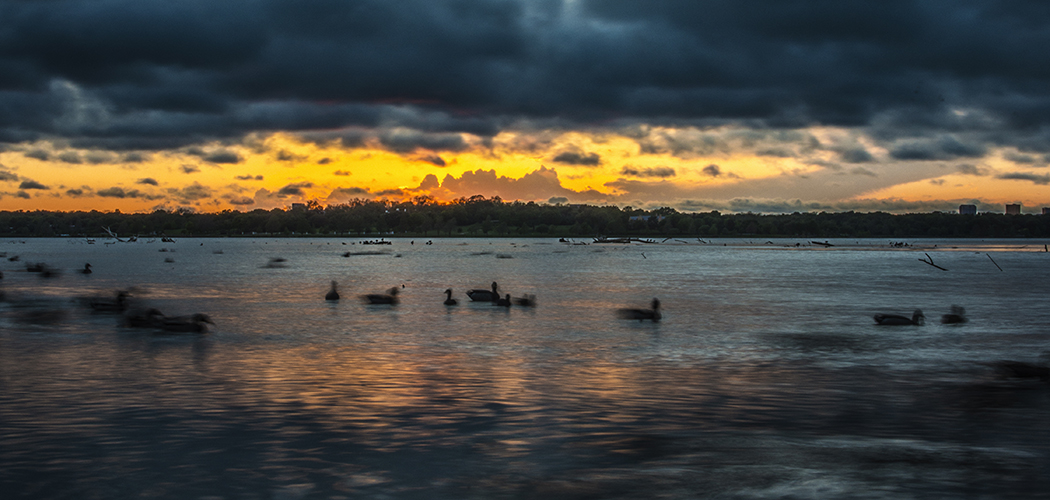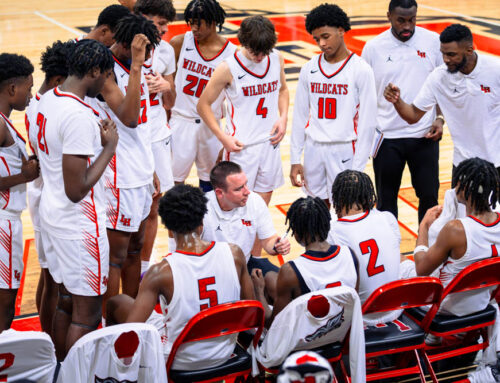
Sunset Bay at White Rock Lake. (Photo by Danny Fulgencio)
Heading out to White Rock Lake, what do you load up? Your kayak? Fishing pole? Fido or Fifi? Don’t forget the CD of frog calls or the chemistry set, essentials for some neighborhood volunteers who are dedicated to protecting and monitoring the water’s quality.
Ask Barbara Turner (a.k.a. “Head Frog Lady”) about those amphibians. Each last Friday at dusk from March through October, Turner welcomes any and all who wish to join her as she gathers data at Sunset Bay, data that will be submitted to Texas Parks and Wildlife. They in turn track the information for environmental changes. Turner explains, “Frogs are the first indicators of water purity. They live in it, breathe in it, lay eggs in it, their whole life cycle is in the water.”
Though it’s officially called “Amphibian Watch,” it’s a bit of a misnomer: more accurately, it’s an amphibian “listen.” To get the croaking rolling, Turner cranks up her CD of frog talk at the water’s edge. The state-supplied CD boasts calls from frogs/toads all over Texas, so Turner has narrowed her playlist to locals, such as the frequently heard Cricket Frog, Green Treefrog and Bullfrog. Sometimes Gulf Coast Toad shows up at the party, too.
Turner records the species that are present, identifying them by their calls. She then notes how many of each species she hears, and her trained ear detects frog/toad conversations. No trash talk here, just exchanges of pleasantries. She says the males are the most talkative; females rarely chime in. Generally, more and more amphibians join the chorus as darkness falls, and many a watch ends in a frog call cacophony.
They can be sensitive creatures, not at all fond of changes in their environment. Turner recalls a watch one month when a nearby spillway was undergoing repairs. The calls were “greatly diminished.” But Turner found the amphibians back in their usual hangout when the work was completed.
Folks who join Turner for Amphibian Watch often see other critters: coyotes, mink, ducks, geese, owls, bats. It’s fun, but Turner is keenly aware of her environmental mission. “Is the water pure?” she asks. “Is it sustainable for frogs and toads who live there?”
Neighbor Richard Grayson is another environmental steward of White Rock Lake, but instead of playing frog calls, he totes a chemistry set that would make Louis Pasteur swoon. Grayson is part of the Texas Stream Team, a statewide volunteer water-monitoring program. Around 75 volunteers actively monitor sites in Dallas, Collin and Denton counties, of which 16 are at or near White Rock Lake.
This under-the-radar army of volunteers is known as Aquatic Alliance for Texas Stream Team and is allied with quite a number in the community, including schools, scouts, Dallas Storm Water Management, Master Naturalists, Trinity River Audubon Center and For the Love of the Lake. Much of the team’s equipment is stored at FTLOTL headquarters.
“Citizen Scientists” undergo training to gain a full understanding of the importance and science of water quality. Team Leader Grayson has been a certified trainer since 2011 and frequently accompanies student monitors to assigned sites. They learn hands-on how to put to good use to the intriguing set of test tubes, thermometers, probes and chemicals they carry.
You might spot a monitor at White Rock Dog Park. To ensure your dog has safe, healthy water in which to frolic, the monitor will follow a routine. He or she will make notes on field observations, such as weather conditions, water color and clarity, air and water temperature, and algae cover. Using meters, pH and conductivity are measured. Dissolved oxygen, one of the most important indicators of water quality for fish and other aquatic life, is calculated by first “fixing” a water sample with manganese sulfate, alkaline potassium and sulfuric acid. And that’s only the first step. It’s a tall order, all this chemistry, but volunteers are well-trained and dedicated.
At a few sites, advanced methods are used to collect data on bacteria such as E. coli, nitrates and phosphates. Collected data is sent to TST headquarters at Texas State University in San Marcos/Meadows Center for Water and Environment. The information gathered supports research, informs conservation policy, and can even serve as an early warning system for water health.
White Rock Lake, the largest urban lake in the country, is a treasure these neighbors are dedicated to protecting.
Find out more at ntmn.org watch





